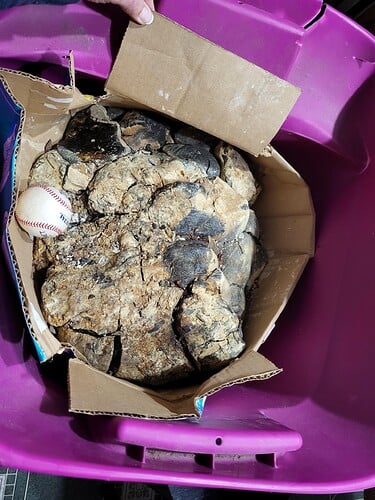Hello everyone!
I have a piece of raw amber that is larger than a basketball. It was dredged up while scalloping in the Baltimore Canyon ( a mammoth tooth also came up with it) off the coast of New Jersey. I have taken it to my local fossil museum and they have told me that it is amber believed to be from the Miocene period. I have appointments scheduled with professors/scientists from a University and museum here in N.C so they can scan it and examine it further.
I would like to request your insight and opinions on how to gain a monetary value and how to see if there is interest on the collectors side of things.
I will appreciate any input you may have!
Hi Angie, welcome to the community!
Wow! What a treasure and incredible discovery!
You are on the right track to get it analyzed and verified with the faculty and staff at the University / Museum. You should reach out to a local Rockhound / Gemology Club. Members of these groups/clubs are always good resources to find printed books and local experts.
To valuate it, you can start with these websites to begin researching on what points of interest will affect the price.
Several discussion topics like Inclusions in Baltic Amber here at IGS should be read for additional links.
IGS - Amber Value, Price and Jewelry Information
ICG - International Colored Gemstone Association
Amber International
Amber Getty.edu
Amber - Minedat.org
Amber - Gemdat.org
Check out the business section here at IGS. There are quite a few companies that may have insight on selling/purchasing your treasure!
And I couldn’t resist adding a wiki page on the New Jersey Amber with several good references to search for.
Cheers!
That is amazing, thanks for sharing!
I cannot help with monetary value, but I would very much like to know its origin. It may be local, but I am unaware of amber found in that region, and given that amber has been coveted and traded since time immortal, it’s very possible (likely probable) it was lost in a boat/ship-wreck either in that region or somewhere else; amber is botany enough in saltwater to have drifted for many thousands of miles over centuries, before finding its way into your net (or whatever scooped it up). Because its organic and known amber chemical composition are documented, its origin should be knowable.
Are any of those museums/labs going to do testing to determine origin? If not, and if you are open to this, please PM me, I’d like to buy a small piece to have tested for my own research purposes. The value of amber is influenced by origin and by other features (like inclusions, as others have highlighted). It is pretty likely that knowing its origin will tell a story about it that will enhance its value.



